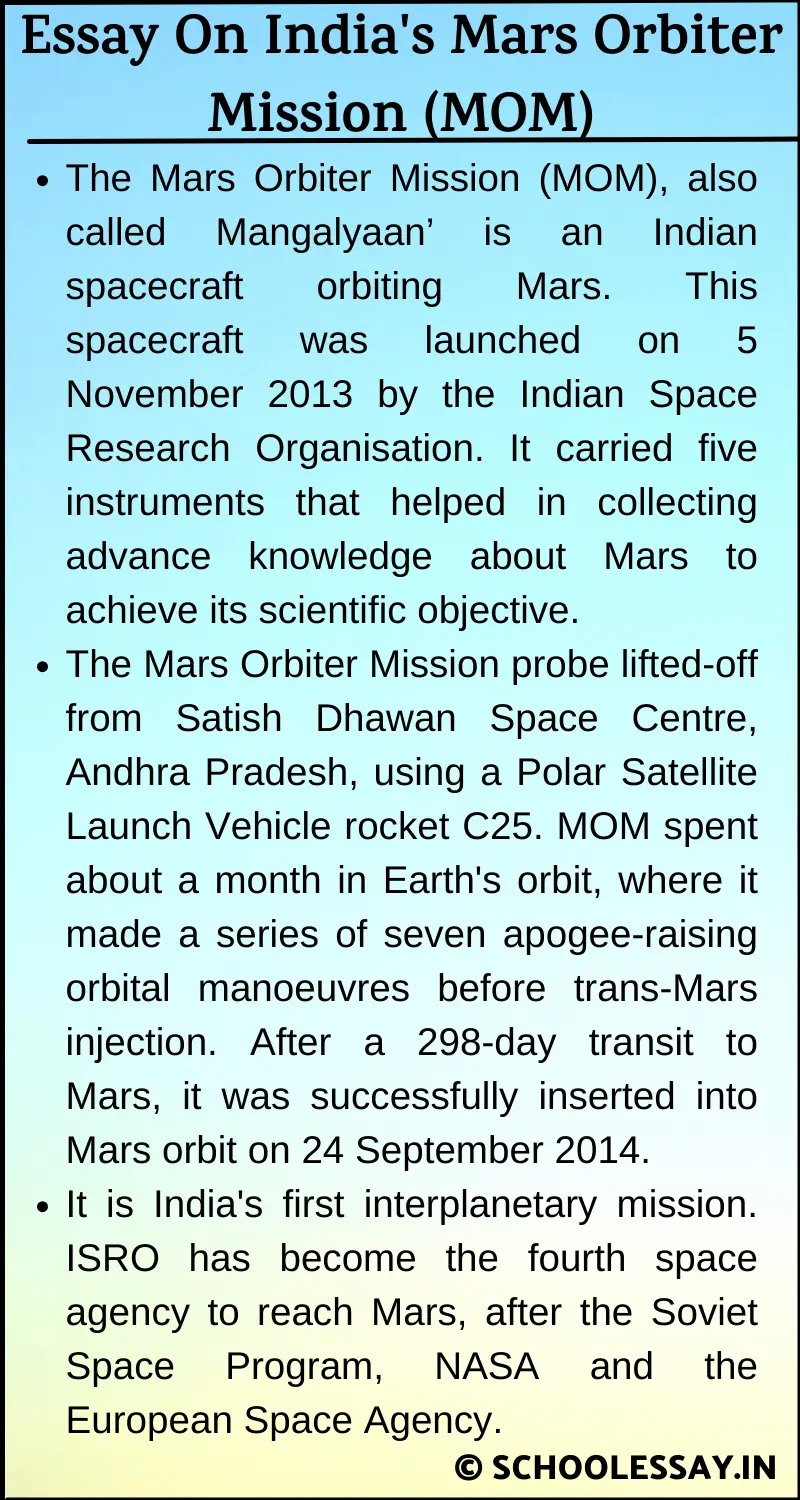Essay On India’s Mars Orbiter Mission (MOM)
The Mars Orbiter Mission (MOM), also called Mangalyaan’ is an Indian spacecraft orbiting Mars. This spacecraft was launched on 5 November 2013 by the Indian Space Research Organisation. It carried five instruments that helped in collecting advance knowledge about Mars to achieve its scientific objective.
The Mars Orbiter Mission probe lifted-off from Satish Dhawan Space Centre, Andhra Pradesh, using a Polar Satellite Launch Vehicle rocket C25. MOM spent about a month in Earth’s orbit, where it made a series of seven apogee-raising orbital manoeuvres before trans-Mars injection. After a 298-day transit to Mars, it was successfully inserted into Mars orbit on 24 September 2014.
It is India’s first interplanetary mission. ISRO has become the fourth space agency to reach Mars, after the Soviet Space Program, NASA and the European Space Agency. India became the first nation to reach Mars orbit on its first attempt.
The MOM mission concept began with a study in 2010. The primary objective of the Mars Orbiter Mission is to display India’s rocket launch systems, spacecraft-building and operations capabilities. It also aims to develop the technologies required for design, planning, management and operations of an interplanetary mission. It comprises the major tasks such as design and understanding of a Mars Orbiter with a capability to perform Earth-bound manoeuvres, cruise phase of 300 days, Mars orbit capture and on-orbit phase around Mars. Moreover, it also aims to explore features of Mars’ surface and unfamiliar atmosphere using scientific instruments.
The lift-off mass was 1,350 kilograms, including 852 kilograms of propellant. The structure of the satellite is constructed of aluminium. It composites fibre protected plastic sandwich construction. A liquid fuel engine with a thrust of 440 newtons is used in MOM for orbit raising and insertion into Mars orbit.
The orbit insertion put MOM in a highly oval orbit around Mars. At the end of the orbit insertion, MOM was left with 40 kilograms of fuel as against the 20 kilograms that was necessary for the six month life span. On 28 September 2014, Mars Orbiter Mission published its first global view of Mars. The image was captured by the Mars Colour Camera. On 19th October 2014, the Indian Space Research Organisation reported that the Mars Orbiter Mission is healthy after the Comet Siding Spring flew by of Mars earlier that day.

ALSO READ:
- Essay On India’s Space Programme
- Essay On Indus Valley Its Town Planning And Civil Life
- Essay On Industrial Revolution And Its Causes
- Essay On Importance of Good Manners
- Essay On Importance of Physical Education In Schools
- Essay On India Can Become A World Power
- Essay On The India of My Dreams
- Essay On Importance of English Language
- Essay On Importance And Uses Of Electricity
- Essay On If I Win a Lottery


